Your search for the perfect gluten free pie crust recipe ends here! This no-fail recipe is surprisingly easy to make and makes a perfectly flaky pie crust. Works with most gluten-free flour blends so you don’t have to buy anything special.
Updated 8.15.2023
Pie crust is an ever-elusive art, and finding a gluten-free pie crust that even comes close to flaky can be a daunting task!
For the past seven years, I’ve been attempting to crack the code, and I’m happy to announce that this recipe is not only gluten free, it’s also one of the flakiest pie crusts I’ve ever had!
I have to admit I’m a bit of a pie snob…
I spent a lot of Thanksgivings at my aunt’s house where she made more pies than there were people.
Of course, my aunt made regular pie crust with wheat flour, so I watched and listened to her techniques in order to apply them to a gf pie crust recipe to make one that is flaky, tender, and, well, perfect.
I am so excited to share everything I’ve learned with you!
WAIT! Don’t lose this post! Save this image on Pinterest
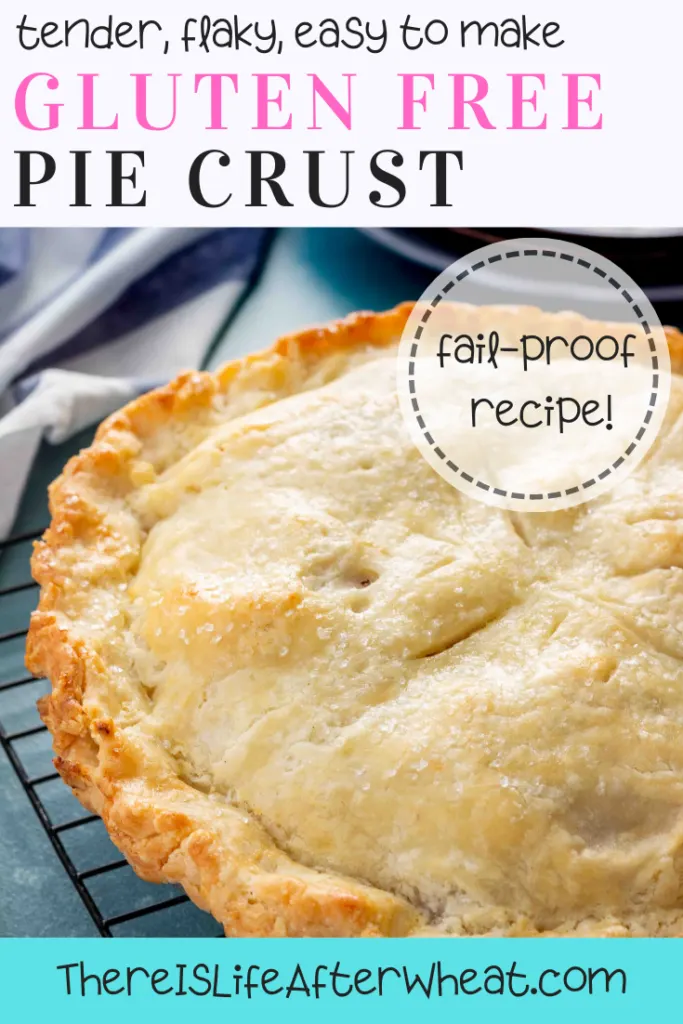
Table of Contents
Why You’ll Love This Recipe
I know that once you make this recipe, you’ll never go back to any other. Here’s what makes this the best gluten-free pie crust:
- No pastry cutter or grating the butter. Yep, you read that right! You can use a stand mixer or a food processor which means less time and effort on your part (high five!)
- Simple ingredients and works with pretty much any gluten-free all purpose flour blend so you don’t have to go out and buy anything crazy or spend time mixing flours (unless you want to)
- Easy for everyone. Whether this is your first time making pie crust or you’re a pie connoisseur, this recipe will work for you!
Tips for Making FLAKY Gluten-Free Pie Crust
There are a few simple tips that will help you make a flaky pie crust every time:
- Don’t over-mix. You should have bits of butter in varying sizes throughout the dough. This is what creates pockets of air and makes the gluten free pie crust flaky.
- Use cold butter. Starting with cold butter means the butter will melt while baking, creating that tender and flaky crust you’re going for!
- refrigerate the dough. This keeps the butter cold right up until the pie crust goes in the oven.
- Get a pie crust bag. This is one of my favorite kitchen tools! It makes it so easy to roll out pie crust without all the mess and hassle or overworking the dough. I also use my pie crust bag for making gluten free crescent rolls. You can also use parchment paper or plastic wrap.
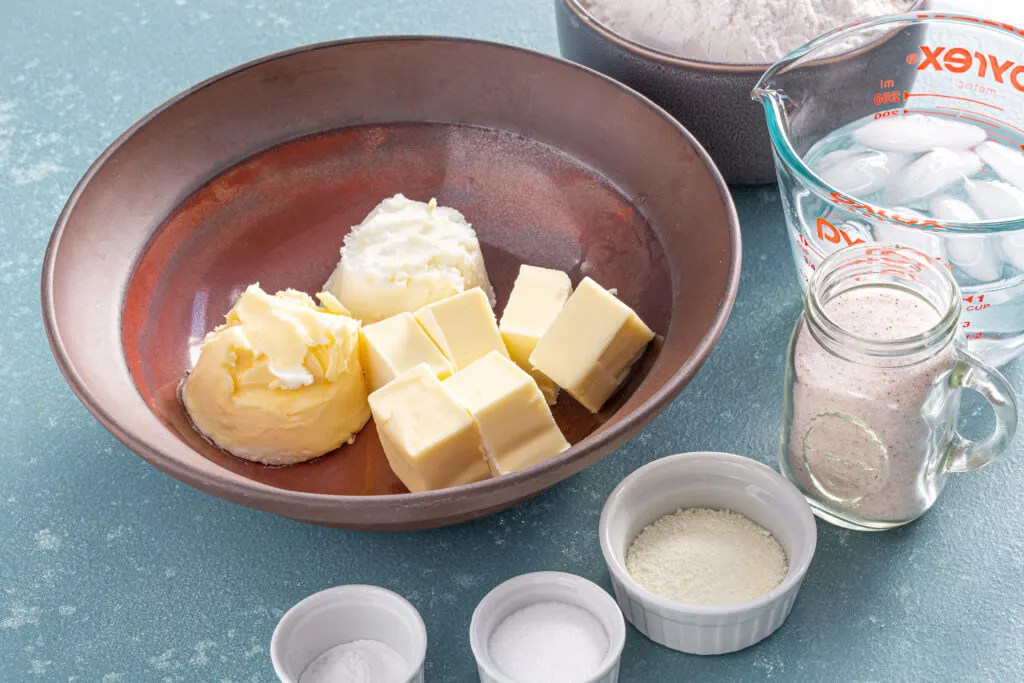
Ingredients in Gluten Free Pie Crust
This recipe uses just a few simple ingredients. Amounts and full instructions can be found in the recipe card below.
salted butter – it should be fresh out of the fridge to make those flaky layers
shortening – I like using butter flavored shortening for a richer flavor
sugar
baking powder – this is a bit unusual, but it’s a tip from pastry chef Nick Malgieri that helps the pie crust expand in the pan instead of creeping down the sides.
salt
Instant powdered milk – gluten-free flours don’t brown as well, so powdered milk gives the crust a golden appearance and also helps provide a richer flavor.
gluten-free flour blend – Just about any blend will work, but see below for my recommendations
ice-cold water – temp is key! You want your water to be nice and cold to help with a flaky texture.
egg – this is not mixed into the dough, so it can be left out if you’re egg free. I always do an egg wash because it makes a beautiful, golden brown crust!
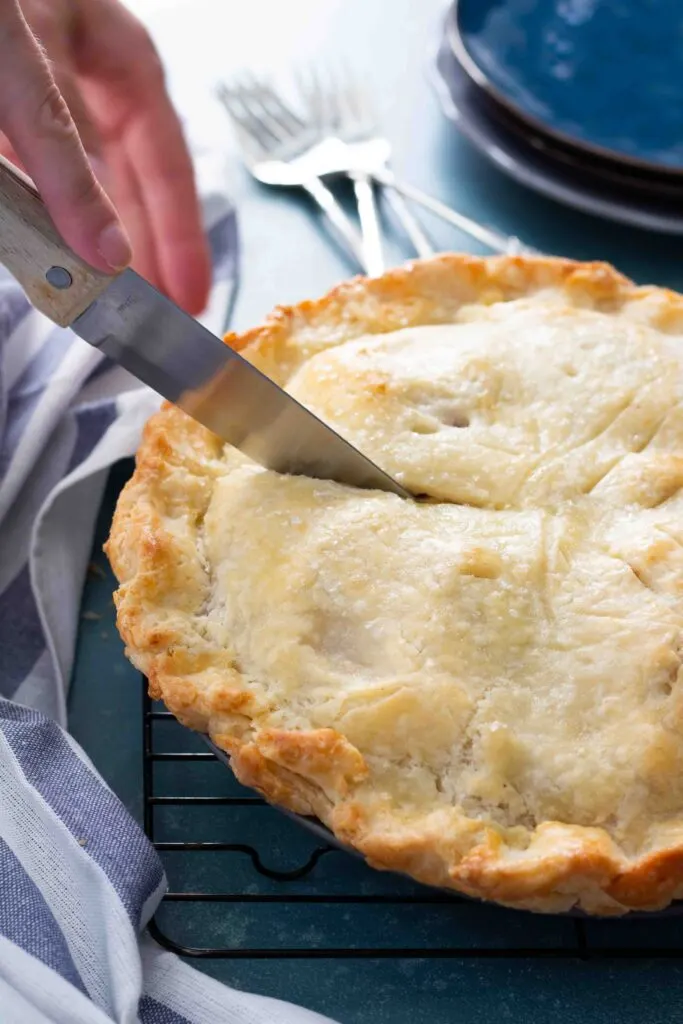
Best Gluten-Free Flour for Pie Crust
Gluten-free flour blends vary widely in their performance so it’s important to select the right one when making a gluten-free pie crust recipe. Cup4Cup and Better Batter all purpose flour blends tend to work best in pie crust recipes, providing a flaky texture without grittiness.
That being said, this is a versatile recipe that I’ve tested successfully with many gluten-free flour blends. Here are a few tips to ensure your success:
- Use an all purpose flour blend, not a single gluten-free flour such as rice or almond flour.
- While I prefer Cup4Cup or Better Batter, I’ve also used gfJules, Bob’s Red Mill 1:1, and King Arthur Measure for Measure with great results.
- Always use the stir, scoop, and level method when measuring your flour to ensure you’re adding the correct amount. Too much flour in pie crust makes it tough and, for gluten-free, gritty.
- If you’re making your own flour blend or using one without xanthan gum, add 3/4 teaspoon xanthan gum to this recipe
How to Make Gluten-Free Pie Crust
I love this easy gluten-free pie crust recipe because you don’t have to mix the ingredients with a pastry blender or by hand – you can use your stand mixer or food processor!
Here’s how you make homemade gluten-free pie crust (see the corresponding pictures below)
Briefly cream the fats together – you’ll want to have pieces of cold butter throughout so don’t over mix. (see left photo)
Add dry ingredients: salt, instant dry milk, sugar, baking powder, and part of the flour. Use the lowest setting of your stand mixer to stir it together. (see middle photo)
Add remaining flour and ice cold water, and stir together just until combined. You can see from the picture on the right that the pie crust dough will be a little chunky and not a smooth and uniform like cookie dough. It should be fairly sticky.
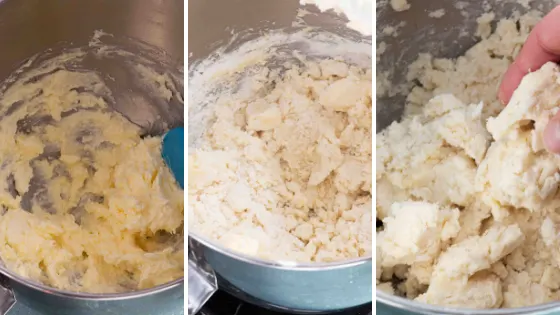
Divide the pie dough in half being careful not to overwork the dough
Place a piece of plastic wrap on the counter and set half of the dough on top. It will be loose instead of a solid dough ball and that’s how you want it. Just gently press it together enough for it to form a disc and seal all the way around with the plastic wrap.
As you can see, the gluten-free pie dough is still kind of chunky and not smooth and cohesive. That’s what makes the flaky layers!
Refrigerate dough for 30-60 minutes.
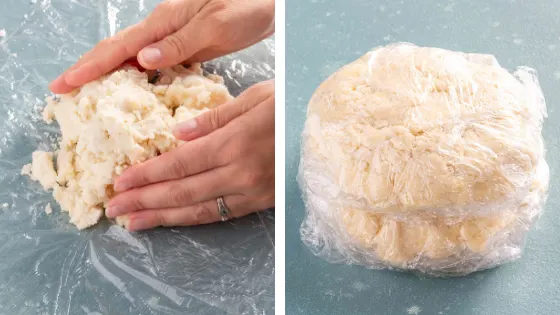
Preheat your oven, and roll out the pie crust – I love using a pie crust bag for this step They are inexpensive and make it so much easier to make gluten-free pie crusts!
Only take out one dough disc at a time, keeping the other one cold in the fridge.
You can use a pie crust bag, or place the pie dough between 2 pieces of parchment paper or plastic wrap. Dust it lightly with gluten free flour before rolling into a circle with a rolling pin.
PRO TIP: If using a wooden rolling pin, be sure it’s never come into contact with gluten as wood is porous
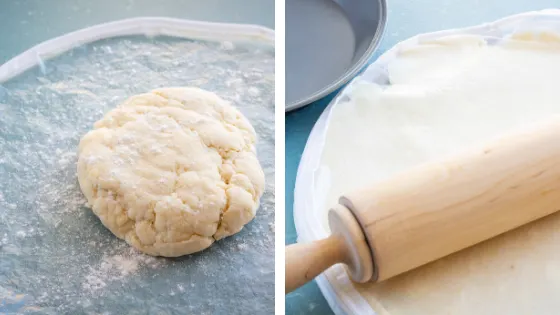
To easily transfer your dough to the pie pan, invert pie pan on top of the rolled out dough, gently slide a hand underneath, and quickly flip it over.
Be careful not to stretch the dough as you fit it in the pan, as this will lead to shrinkage and/or holes in your crust.
Can you spot the chunks of butter in the finished crust?
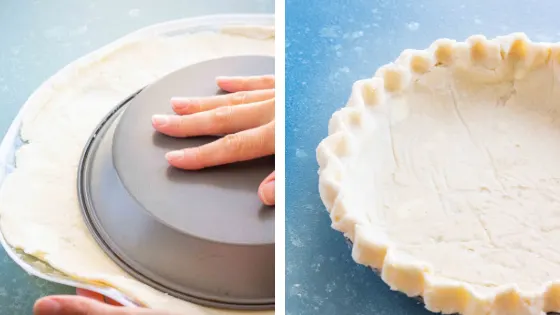
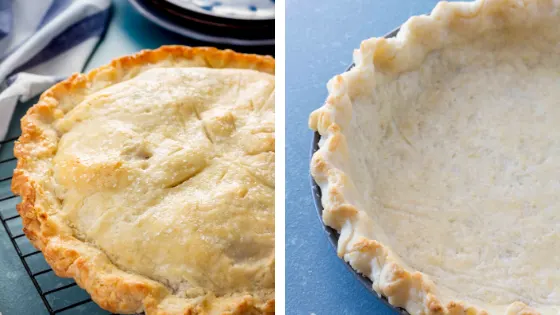
Make a Single or Double-Crust Pie
This recipe makes a 2 pie crusts, enough for 2 single-crust pies or 1 double-crust pie.
This pie crust works great for savory pies, apple pie, pumpkin pie, or with your other favorite pie filling!
To make a single gluten-free crust:
- Invert a single dough disc into a pie dish.
- Trim the edges and crimp using your fingers or a fork.
- Prick with a fork 2-3 times.
- Brush with egg wash or heavy cream.
- Use pie weights to prevent your crust from shrinking as it bakes.
- Blind bake for 14-17 minutes. It will not brown as much as a double-crust pie.
Try this single-crust recipe with a Cocoa Pecan Pie!
To make a double crust pie:
- Roll out bottom crust and invert onto a pie plate.
- Fill with desired pie filling
- Roll out second disc and invert onto top of pie.
- Seal and flute the edges using your fingers or a fork.
- Cut a few slits in the top crust to release steam, then brush with an egg wash or heavy cream.
- Sprinkle with sparkling sugar or regular white sugar, and bake according to recipe directions, usually 50-60 minutes.
Pro Tips for Pies
- Level up a chocolate cream pie by sprinkling a handful of milk chocolate chips on the crust as soon as it comes out of the oven. Once they’ve melted, use a pastry brush to spread it in a thin layer over the crust.
Cool completely and allow the chocolate to harden before filling with chocolate pudding – this will create a barrier that will keep the crust from getting soggy, and add another element of flavor and texture to your pie!
I recommend milk chocolate chips because a darker variety will make chocolate layer harder to cut through. - Always use an egg wash for single or double-crusted pies. Brushing the dough with an egg wash before baking gives it a beautiful golden brown hue and adds to the flakiness. If you can’t do eggs, you can substitute heavy cream.
- Sprinkle sparkling sugar on top of a double-crusted pie before baking to give it a beautiful finish and delightful crunch
- Always allow the pie to cool completely before serving. I know, I know, it’s hard to wait! But the crust and filling will be at their best when cool.

Can I Make this Gluten Free Pie Crust Recipe Dairy Free?
Using 3 different types of fat in the recipe is what gives this crust lift and flakiness so I definitely recommend sticking to the original recipe if you can.
If you need a dairy-free option, you can use only shortening or a combination of vegan shortening and vegan butter. Be sure to use dairy-free butter in stick form-my favorite for taste and texture is Melt brand.
If you’re looking for more dairy free pies, this gluten free pecan pie is a great recipe!
MAKING THIS RECIPE??? We would love to see what you create with pie crust! Snap a photo, and tag @LifeAfterWheat on social media – we love seeing what you make!
Favorite Pie Recipes
Check out my fun, quick, and EASY Gluten Free Ice Cream Pies!
Gluten Free Pie Crust Recipe
Here’s the printable recipe, I hope you enjoy it! If you have any questions along the way, you can leave a comment on this post or reach out to @LifeAfterWheat on social media.
Happy baking!
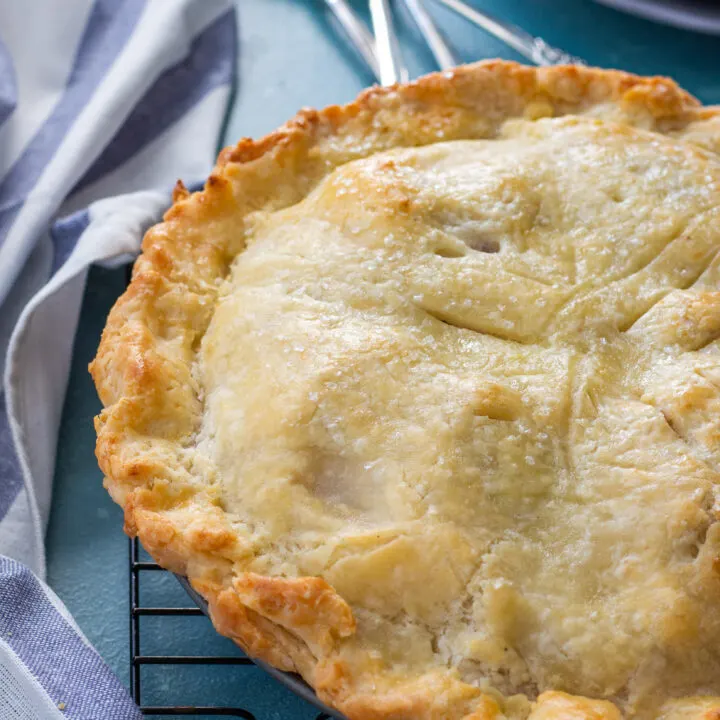
Gluten Free Pie Crust
FINALLY, a gluten free pie crust that is Tender, Flaky, & doesn't fall apart! I'll walk you through this easy, fail-proof recipe for the perfect pie crust!
Ingredients
- 1/2 cup salted butter - cold & cut into 8 pieces
- 1/3 cup shortening (I used spectrum)
- 1/3 cup butter-flavored Crisco shortening
- 1 T sugar
- 1/2 teaspoon baking powder
- 1 teaspoon salt
- 1 Tablespoon dry milk
- 2 3/4 cup high quality gluten free flour - divided (see notes)
- 2/3 cup ice-cold water
- 1 Egg for egg wash (optional)
Instructions
- In bowl of stand mixer (see notes for other options), combine cold butter and shortenings. Mix on medium speed for 30 seconds. It should be fairly creamy with pieces of butter throughout.
- Add sugar, baking powder, salt, dry milk, and 1 1/2 cups flour (see notes for measuring tips!) and stir (I use stir speed on Kitchen Aid stand mixer) for 10 seconds.
- Add remaining 1 1/4 cups gluten free flour and 2/3 cup ice cold water (see notes) and mix just until combined. Don't expect the dough to be smooth and solid like cookie dough, it should be a little choppy because you don't want to over-mix it. See the step-by-step pictures in the post for reference. If the dough seems too dry, add a tablespoon of water.
- Lay out a sheet of plastic wrap and pat half the dough together into a ball, then wrap tightly in plastic wrap. Repeat with the other half and refrigerate the dough for 30-60 minutes.
- When ready to bake, preheat oven to 375 degrees F.
- Remove one disc of dough and roll it out into a circle larger than your pie plate (I use a 14" pie crust bag for this) You'll want to dust your surface with gluten free flour, but just a little - 1 tablespoon ought to do.
- Invert pie crust onto pie plate and poke with a fork 2-3 times.
- Whisk egg and brush onto pie crust. You won't need much of the egg, but brushing a little on will give your crust a beautiful, golden color and crispy edges.
- Bake single pie crust for 14-17 minutes.
- For double-crust pie, fill with desired filling, roll out second disc and invert onto top of pie. Seal and flute the edges, cut a few slits to release steam, then brush the top with egg wash. Sprinkle with sparkling sugar or regular white sugar, and bake according to recipe directions, usually 50-60 minutes.
Notes
- Flour matters. Gluten free flour blends are all different, so I suggest using a high-quality blend that you have had success with in other finicky recipes like cookies or rolls. I prefer Better Batter all-purpose gluten free flour when making this recipe, but Bob's Red Mill 1:1 (not the bean-based) works great as well!
- To measure flour: Stir the flour, scoop into measuring cup, and level off with the flat side of a knife. This will ensure you aren't adding too much flour to the recipe.
- Don't over-mix. You should have bits of butter in varying sizes throughout the dough. This is what creates pockets of air and makes the pie crust flaky.
- Use cold butter and refrigerate the dough. Starting with cold butter means the butter will melt while baking, creating that tender and flaky crust you're going for! You only need to refrigerate the dough for 30-60 minutes.
- Get a pie crust bag. This is one of my favorite kitchen tools! It makes it so easy to roll out pie crust without all the mess and hassle. I also use my pie crust bag for making gluten free crescent rolls.
- You can make pie crust ahead of time. To make pie crust ahead of time, prepare the dough as directed and wrap tightly in plastic wrap. Store in the fridge up to 2 days, and let sit at room temp for 10-20 minutes before rolling out so it will be easier to handle.
- If you don't have a stand mixer, you can use a large bowl and hand mixer. You can also use a wooden spoon (or other sturdy spoon) to cream the butter and the do the rest by hand.
- Use ice water. Add a handful of ice cubes to about a cup of water, let it sit for a few minutes so the water gets nice and cold, then measure your 2/3 cup from there.
Recommended Products
As an Amazon Associate and member of other affiliate programs, I earn from qualifying purchases.
-
 Mrs. Anderson’s Baking 7407 Anderson’s Easy No-Mess Pie Crust Maker Bag, 14-Inches, Clear
Mrs. Anderson’s Baking 7407 Anderson’s Easy No-Mess Pie Crust Maker Bag, 14-Inches, Clear -
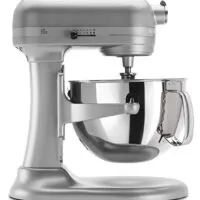 KitchenAid KP26M1XNP 6 Qt. Professional 600 Series Bowl-Lift Stand Mixer - Nickel Pearl
KitchenAid KP26M1XNP 6 Qt. Professional 600 Series Bowl-Lift Stand Mixer - Nickel Pearl -
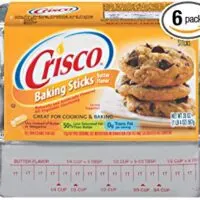 Crisco Baking Sticks Butter Flavor All-Vegetable Shortening, 20-Ounce (Pack of 6)
Crisco Baking Sticks Butter Flavor All-Vegetable Shortening, 20-Ounce (Pack of 6) -
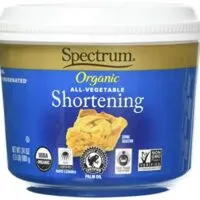 Spectrum Shortening, 100% Vegetable, Organic, 24 oz
Spectrum Shortening, 100% Vegetable, Organic, 24 oz -
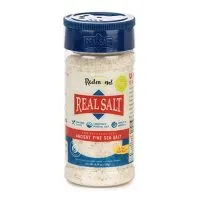 Redmond Real Sea Salt - Natural Unrefined Organic Gluten Free Fine, 4.75 Ounce Shaker (1 Pack)
Redmond Real Sea Salt - Natural Unrefined Organic Gluten Free Fine, 4.75 Ounce Shaker (1 Pack) -
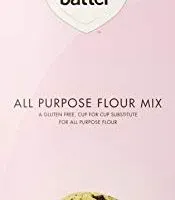 Better Batter Gluten-Free Flour
Better Batter Gluten-Free Flour
Nutrition Information:
Yield: 8 Serving Size: 1Amount Per Serving: Calories: 795Total Fat: 82gSaturated Fat: 51gTrans Fat: 3gUnsaturated Fat: 25gCholesterol: 260mgSodium: 691mgCarbohydrates: 14gFiber: 0gSugar: 2gProtein: 4g

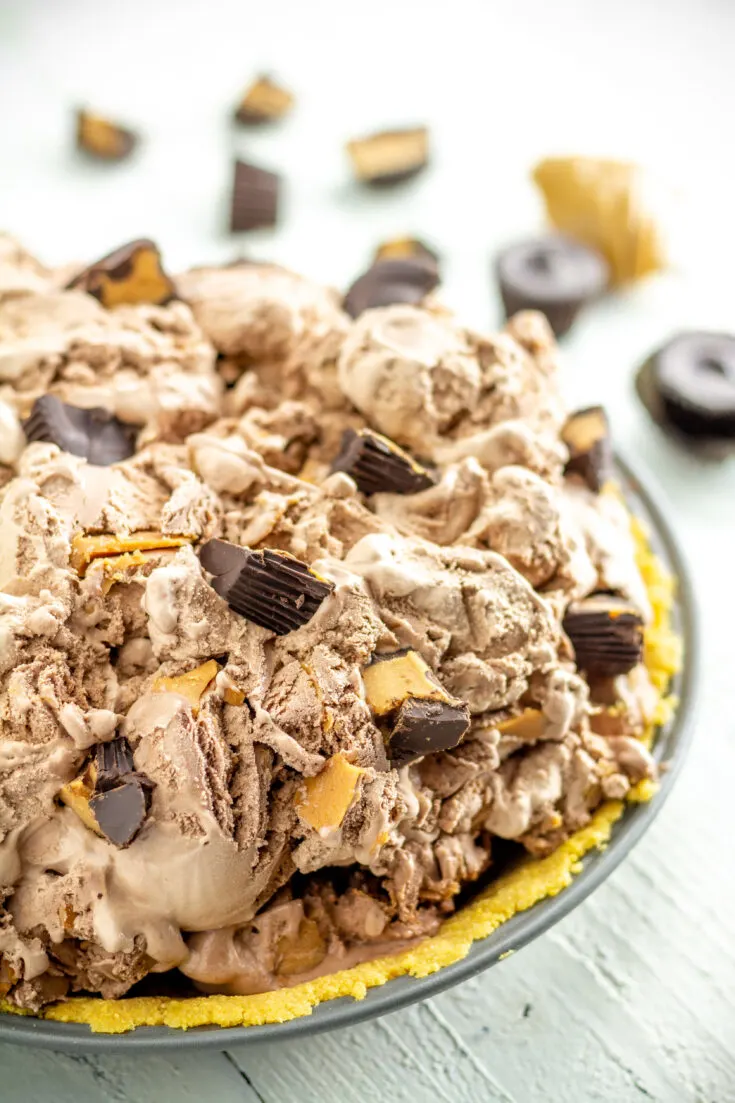

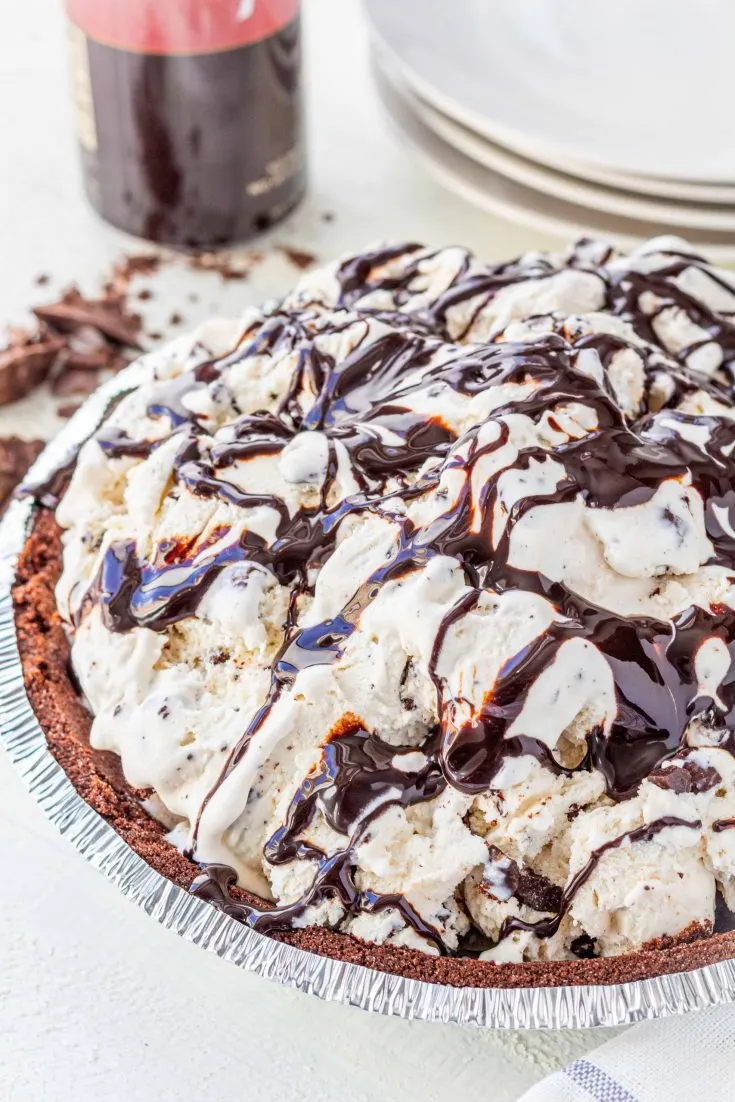
Donna
Monday 17th of June 2024
Excellent! Taste and texture are very good. I have used this for single and double crust pies as well as rustic fruit tarts.
Kim
Friday 5th of January 2024
Why two different shortenings? I only have crisco so can I use just that? TIA
Celeste Noland
Friday 12th of January 2024
The variety creates the best texture. You can use just Crisco though, if you want.
Sara
Friday 24th of November 2023
Has anyone tried this with Bob's Red Mil 1:1? Very hard to get a good gf flour here. The last gf pie crust I tried I had to warn people to maybe just eat the filling! It was so disappointing.
Celeste Noland
Wednesday 29th of November 2023
I've used Bob's Red Mill, it's not my favorite of the ones I've used but the crust still comes out great! This really is a forgiving recipe, the only flour I wouldn't recommend is Namaste.
Cate
Thursday 26th of October 2023
This pie crust looks amazing! Will it work for a savory pie as well? I was going to use it for a chicken pot pie. Should I omit the sugar? Any other changes for a savory crust?
thereislifeafterwheat@gmail.com
Friday 27th of October 2023
Yes! I use it for chicken pot pie all the time, so good! You can use the recipe as written. Enoy!
Gayle
Saturday 9th of September 2023
This is absolutely the best pie crust! I have been so discouraged after making many unsuccessful pie crusts since diagnosed with celiac disease several years ago. This crust looks amazing and tastes even better! I made a small hand pie with the leftover crust last week (from the edges) so today that is what I am making with the entire recipe. I have a jar of peaches that didn’t seal so it’s going to be peach hand pies. The first pie I made was a blueberry pie and I think it was as a good as the ones my “expert” grandmother used to make. That’s saying a lot! Thanks so much for sharing!!!